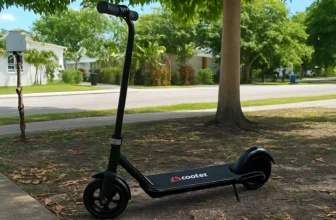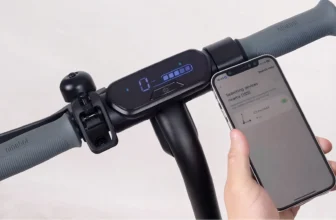In the world of electric scooters, one type of tire reigns supreme: the pneumatic tire. It is by far the most commonly used tire on todays popular e-scooter models. They come in various sizes and forms, boasting a plethora of different tread patterns suited for different terrains. Among pneumatic tires, there are two main types: tube-type and tubeless.
But, which one is the best? What are their characteristics? How do you know which one you have, or which one you should have?
The questions are endless. So, let’s take a plunge into the rubbery knowledge river of pneumatic tubed and tubeless tires!
Spotting The Difference Between Tube And Tubeless Tires
To the inexperienced eye a tubeless tire will look just like any other tube-type clincher tire. Therefore I think the best place for us to start is to learn how to spot the difference between the two.
If you have the two different varieties on a table in front of you it will be quite easy to tell. Tubeless tires will literally be marked with a “Tubeless” or “TL” marking on the sidewall of the tire. But sometimes these labels won’t be there and that is often for two reasons. Reason one being the manufacturer didn’t care to label the tire, reason two, the tire has been used extensively and the markings have diminished over time and are now unreadable.
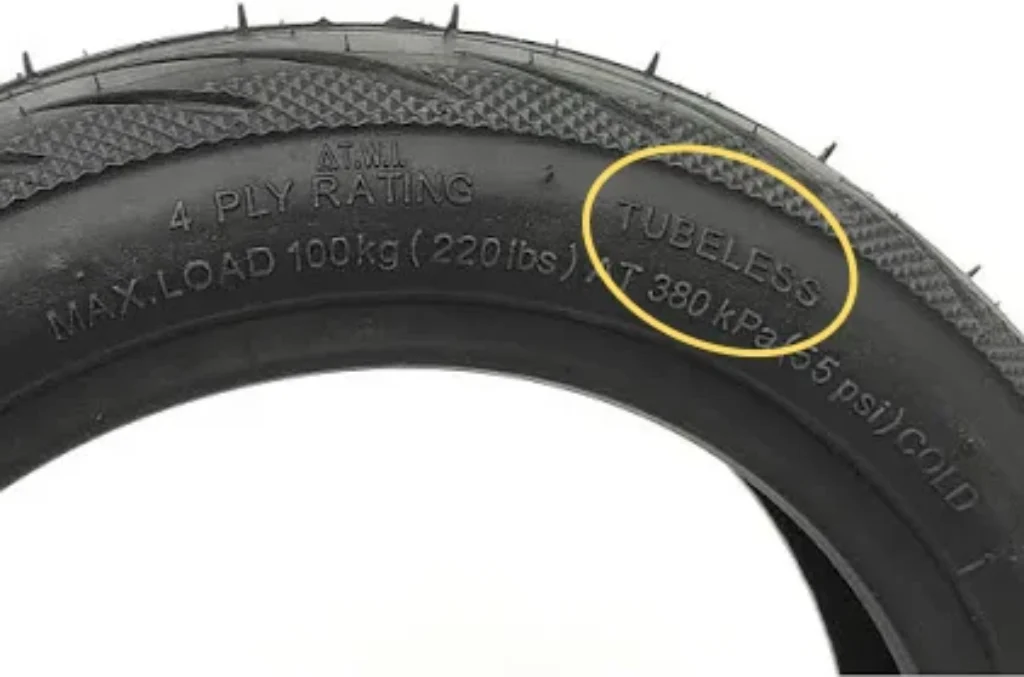
When this happens the best place to look is at the air valve( that is where you inflate the tire with air). The two tire types use slightly different models of the same type of valve and therefore you can easily spot the difference by inspecting the valves.
A tubed tire will have its valve attached to the innertube. This means that you can see a gap between the hole in the rim where the valve comes out and the actual valve, you can also move it slightly from side to side, or in and out if the tire pressure allows for it.
A tubeless tire will have its valve fixed to the rim. For a visual comparison you can check the image below:
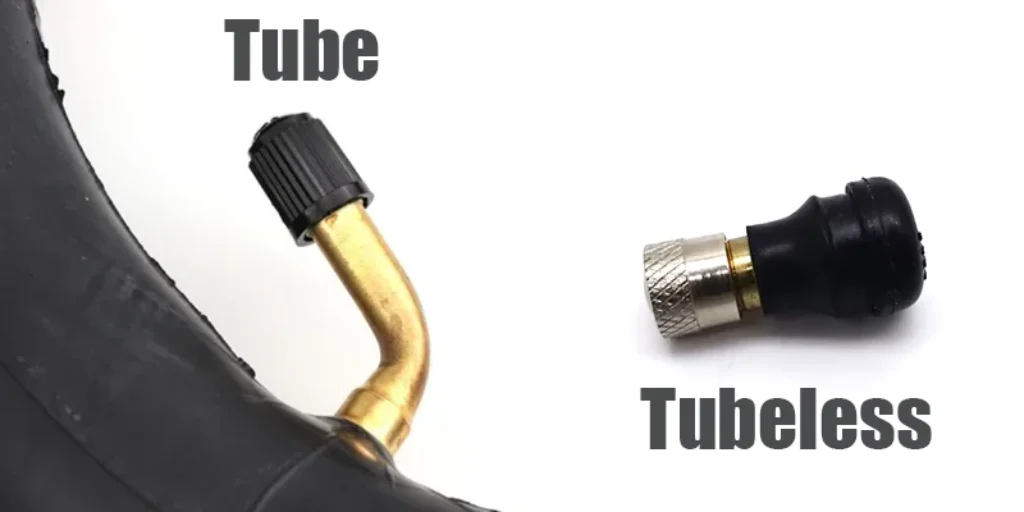
Key Differences Between A Tubeless And Tubed Tire
The tubeless tire creates a sealed compartment between the tire and the rim where air will pressurize as you inflate the tire. Whilst a tubed tire will hold its air inside the innertube that is mounted inside the tire.
The two tires use the same type of valve but one is attached to the rim, and the other is attached to the innertube directly.
Tubeless and tubed tires have different puncture behavior. Where tubes are more prone to giving you a flat in a matter of seconds to at best minutes. A tubeless tire may often go on for hours to days until fully deflated. This is especially true if the culprit causing your puncture is still stuck in the tire. Better yet, in today’s modern age most electric scooter brands prefer to use tubeless tires as a standard and have them pre-filled with a special coating that will actually self-seal any minor punctures making them less prone to punctures.
Tubed tires are also prone to getting other types of punctures like if you run over a sharp rock it may pinch the inner tube or if the tire lacks air pressure it may move around inside the tire and pinch at the valve or near the rim. On the good side punctures on tubed tires are often less costly as an inner tube rarely sets you back more than a couple of dollars.
Pros and Cons Of Using Tubeless VS Tubed Tires
Benefits of tube-type tires
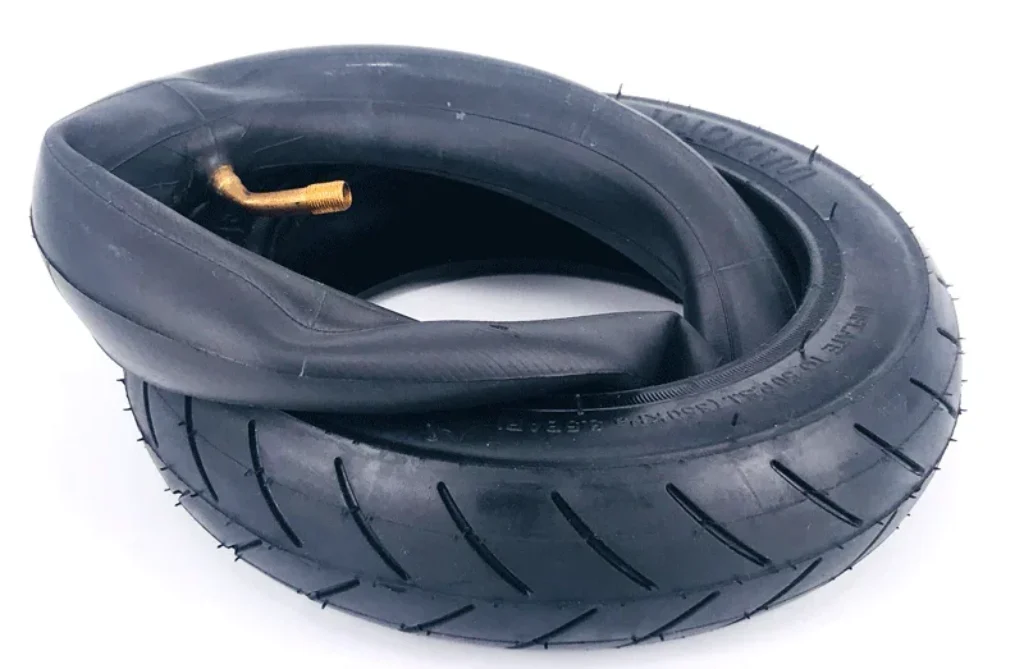
Inexpensive – Repairing tube-type tires are very inexpensive, either you can repair the tube using a good old tube puncture repair kit, or you can buy a new one for a fraction of the cost of a new tire.
Easy to repair – Even the worst handyman can exchange an inner tube. It doesn’t require a lot of tools, nor is it rocket science and even if you yourself can’t do it. I will bet my last buck you can find a friend, or relative who can.
Widely accessible repair and parts – Repair kits and inner tubes are common items in most well-maintained grocery stores these days. Even if you need a whole new tire you’ll find that most local bike shops will have something fitting laying around.
Drawbacks of tube-type tires
Durability – Tube-type tires are softer than tubeless tires making them less durable. That means that as you ride the tires will deform on bumps and turns more creating heat and lower the longevity of your tires.
Puncture – Although tubed tires are easier and less costly to repair they run a higher risk at getting a puncture. It can be caused both by an object penetrating the inner tube and the tube getting pinched.
Traction – Tubed tires need a higher air pressure to minimize the risk of getting a pinch puncture, this means that the amount of tire surface that connects with the ground will be lower. Resulting in lower traction.
Benefits of tubeless tires

Puncture resistance – Tubeless tires utilize self-sealing coating/slime inside the tires that can quickly and easily seal off minor punctures. Without a tube you also eliminate the risk of pinch punctures.
Ride comfort – Riding with a lower air pressure in the tires with zero risk for pinch flats results in a more comfortable ride as the tires can soak up more bumps from uneven terrain.
Traction – With lower air pressure more of the tire’s surface will be connected to the ground giving your electric scooter better traction. This is especially beneficial when riding off-road or on slippery surfaces.
Durability – With the tire itself being the compartment where air pressure is held the tires rubber needs to be more robust and hard. This makes them withstand wear and tear far better.
Drawbacks of tubeless tires
Setup – Seating a new tire on the rim is a more tedious process than exchanging a regular tube-type tire.
Cost – If you get a more serious wear or puncture that the self-sealing slime cannot repair itself you will need to exchange the whole tire. The tubeless tires are slightly more costly and the likelihood someone will want to pay a professional to do it is greater.
Repair – Repairing the tire on your own is doable but it requires some more extra equipment like a compressor to seat the new tire in place correctly. The process is a bit harder than your regular tube-tire and it can also get a bit messy with the tire-sealant.
To Tube Or Not Tube, That Is The Question?
Choosing the right type of pneumatic tire is to me quite straightforward when it comes to electric scooters. In comparison to E-bikes where the tires and rims have a wide variety of width, electric scooters are 99 out of a 100 times 2-inch and above in width. The rims are also very different and I have never seen a tubeless tire slip and unhook from the bead on an electric scooter. That in combination with the amount of punctures I’ve repaired for my 3 kids alone is enough for me to go tubeless when I can.
The benefits far outweigh the drawbacks in my book and although I too think tube-type tires are far easier to work with. They have come with a lot more frequent work involved, and if you combine the tubes/time spent on repairing punctures I bet you I could get a new tire and a professional to do the repair for the same price when the tubeless tires finally need to be exchanged.
Conclusion
Both tubeless and tubed tires have their drawbacks and benefits. Tubed tires may be much easier to work with and less of a costly investment, but tubeless tires offer you better riding comfort, and need less frequent work as long as you do your due diligence.
My opinion is that tubeless tires provide the best of both worlds. You get better ride handling, comfort, and less risk of getting flats. Make sure you read up on how to set the correct tire pressure so that you can get the effects that are most beneficial to your daily riding needs!
I firmly believe that when it comes to pneumatic tires for electric scooters there is a reason why most popular brands are moving away from tubed tires and offering tubeless self-sealing tires as a standard these days.




